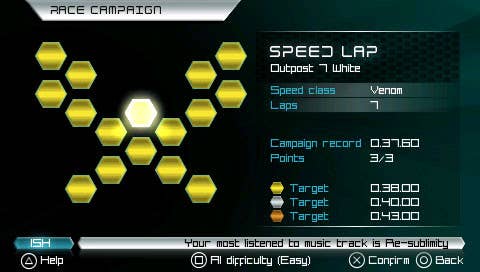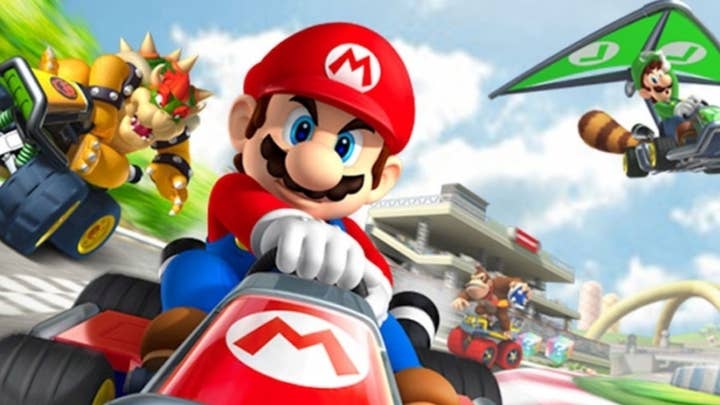How Mario Kart Tour could bring Mario Kart up to speed | Opinion
Nintendo's smartphone racer will need reinvention to succeed in a landscape of player-retention, daily active users and paid conversions
Years ago, I wrote an article giving my impressions of Mario Kart 7. In it, I stated: "It isn't that Mario Kart 7 doesn't have new features. It has a lot of them. The problem is that it doesn't necessarily use them in the smartest way possible."
That statement largely refers to a facet of Mario Kart's design that has prevented my enjoyment of the series for as long as I can remember: the lack of a curated race campaign; and, as a result, the lack of a sense of progression as you spend more time with the game.
As a racing game (which it is, at least in part), Mario Kart's main issue is this: when a new Mario Kart is released, it may contain anywhere between 16 to 32 tracks, but it only takes a couple of hours to unlock every track and see everything there is to see. Once you've done that, all that's left is to play these tracks on higher difficulties over and over again, or in multiplayer. There's no real sense of Nintendo making an effort to curate its content in interesting ways and spread it out for the player to gradually discover and unlock over time. In other words, there's no campaign.
"The potential is simply too large in the mobile racer market for Nintendo to risk missing the target"
In contrast to Mario Kart, let's look at another game from a series it helped inspire: Wipeout Pulse from 2007. Despite being Wipeout's first attempt, Pulse has one of the best race campaigns I've ever encountered. It's broken up into various events such as Single Races, Tournaments (which consist of two to three races), Eliminator (deathmatch races), Head-to-Heads (one-on-one races), Zones, and Time Trials. The game spreads these events out over just 12 tracks, each with a regular and mirrored version. Pulse also has speed classes similar to Mario Kart: Venom, Flash, Rapier, and Phantom.
A dozen tracks and four speed classes isn't a whole lot, but developer SCE Studio Liverpool did a great job of making the most of its limited content. Using a smartly designed race campaign grid (pictured in the screenshot below), it manages to re-use its 12 tracks in exciting and varied ways, ensuring that it provides the player with enough engaging content to last several hours.
The trick to Pulse's campaign isn't that there are a lot of tracks, but that each track can be used in several different ways, across different events, across different speed classes. Additionally, the grid pictured above is just one of many, with new grids unlocked after enough events have been cleared. While Pulse is fairly old by this point, newer racing games such as Forza Motorsport 7 use similar ideas to keep their players engaged, too.

This brings us back to Mario Kart. Judging by how well the console games already do, Mario Kart obviously doesn't need to worry about player-retention. Most accept the idea of Mario Kart being a party game and enjoy it on its own terms. The problem is, Mario Kart is now headed to smartphones, where it won't have that same luxury.
On smartphones, where it can't be a party game and will inevitably have to be more of a free-to-play racer to gain any real traction, it absolutely will have to deal with the concepts of player-retention, daily active users, paid conversions, and all that other business stuff that make smartphone games tick.
As of this article, we know very little about Mario Kart Tour, the Mario Kart mobile game announced by Nintendo last year. We know that it's coming sometime this summer -- pushed back from its original intended launch due to quality concerns -- and beyond that we can engage in some educated speculation. To be more precise, we can safely assume that the "party game" structure that works for Mario Kart on consoles isn't going to be as effective on mobile, and that Nintendo will explore other ways to encourage player retention instead. The potential is simply too large in the mobile racer market for it to risk missing the target.
"We can safely assume that the 'party game' structure used by Mario Kart on consoles isn't going to be as effective on mobile"
Need for Speed: No Limits, for example, has somewhere between 50 and 100 million installs on Android devices alone. Another Electronic Arts game, Real Racing 3, has well over 100 million installs. Meanwhile, Gameloft's Asphalt 8 was equally popular in its heyday, having reached over 300 million downloads overall. In mid-2016, Gameloft reported it had made approximately €44 million (around $54 million) from Asphalt 8 alone. Despite the fact that smartphone racers have seen a notable decline since those prosperous days (Asphalt 9 has only seen 35 million downloads in its first year and EA has reportedly cancelled work on Real Racing 4), imagine what a brand as well known as Mario Kart could do in that space with the right kind of engagement model.
These humongous userbases and the potential for revenue are the reason free-to-play racing games see so much time and effort invested in the planning of their meta-games and gameplay loops. Below is a quick summary of how the basic gameplay loop of a free-to-play smartphone racer usually works. I'm basing this largely on Need for Speed: No Limits, which has one of the more complex metagames I've seen in the genre:
Early game: You race → You earn soft currency → Soft currency is used to buy new cars → New cars unlock new events → You race → You earn soft currency → The loop repeats
Mid game: You race → You earn soft currency → Soft currency is used to upgrade existing cars → Upgraded cars allow you to keep up with the difficulty curve → You race a lot more → You eventually earn/buy hard currency → Hard currency is used to buy expensive new cars → New cars unlock new events → You race → You earn soft currency → The loop repeats

There's a lot more to the loop than that, obviously. You often have to contend with fuel/energy timers that limit how much you can play for free without having to shell out some form of currency (usually the hard variety). You have to contend with constantly juggling whether you want to spend your hard currency on playing more or conserving it to unlock new cars. You have to contend with gacha mechanics that make obtaining car upgrade parts difficult and excessive grinding necessary. Once you have a fancy new car, you have to decide whether to keep upgrading your older cars (which you've already invested hours of effort into), or start bulking up your newer, fancier rides instead.
To sum it up, it can get really meta. And that's part of the charm, so to speak. But this gameplay loop isn't all that different from a regular racing game on consoles. Despite the complex meta-game, the excessive use of gacha mechanics, the ads and reminders that you can pay real money to save yourself hours of grinding, successful free-to-play racing games do tend to have a fairly well designed gameplay loop, and a great sense of curation and progression -- essentially, exactly what Mario Kart will need if it is to succeed on smartphones.
"Just how far down the free-to-play meta-game rabbit-hole is Nintendo willing to go with Mario Kart Tour?"
Nintendo won't necessarily want Mario Kart Tour to be as grindy or as gacha-driven as Need for Speed: No Limits or late-game Asphalt 8, but a smartphone version of Mario Kart would need to involve a gameplay loop purely out of necessity -- because without one, there's no room for monetisation. In order to maintain a loop, it would also need to curate its tracks and events in a way that keeps people playing. In other words, Mario Kart Tour would require a proper race campaign of some sort.
This is easier said than done, and it's not obvious how Nintendo and developer DeNA will deal with (or work around) the issue. One of the things free-to-play racing games use to keep players engaged is the idea of constantly unlocking better and fancier cars, and gating progress behind these cars. This works best when your rides are sleek and stylish, and even better if they're licensed real-life cars like in in Need for Speed. After all, who doesn't want the new Lamborghini, or a McLaren?
Mario Kart's karts, however, are neither sleek nor stylish. Because of this, they aren't really going to serve as an effective means of keeping players engaged through the allure of unlocking them. This means that either Nintendo will need to redesign them so that they can serve this purpose (which is unlikely), or find another solution to create a structure of progression and player-retention. Wipeout Pulse relies almost solely on the idea of unlocking more tracks and events to keep the player engaged, without ever relying on car unlocks. That's one potential avenue for Mario Kart Tour (especially if the "Tour" in the title ends up being a hint at tracks based on real-world locales).
Either way, it will be fascinating to see just how far down the free-to-play meta-game rabbit-hole Nintendo is willing to go with Mario Kart Tour. Will it be a traditional racer like Need for Speed and Asphalt? That would be the logical choice, since those are the types of smartphone racers that tend to do well.
Beyond that, the possibility that Mario Kart Tour could inform the design of the console series in the future is also fascinating. If that ends up being the case, Mario Kart Tour will be incredibly important beyond Nintendo's smartphone initiative as something that actually feeds back into their console business.
